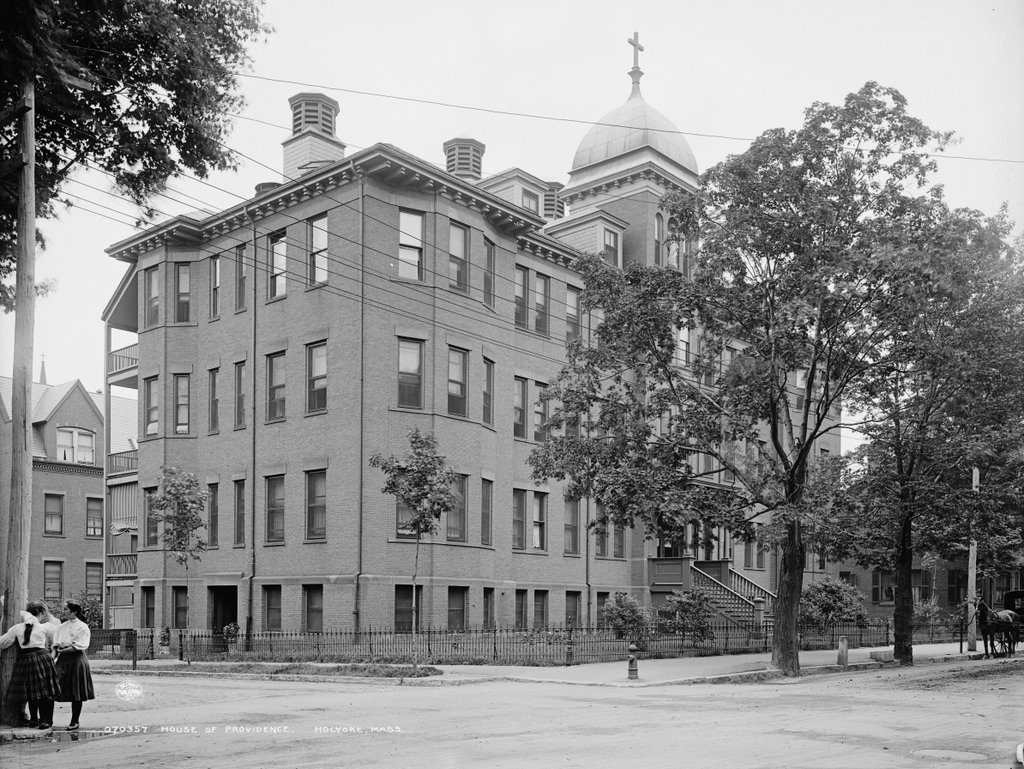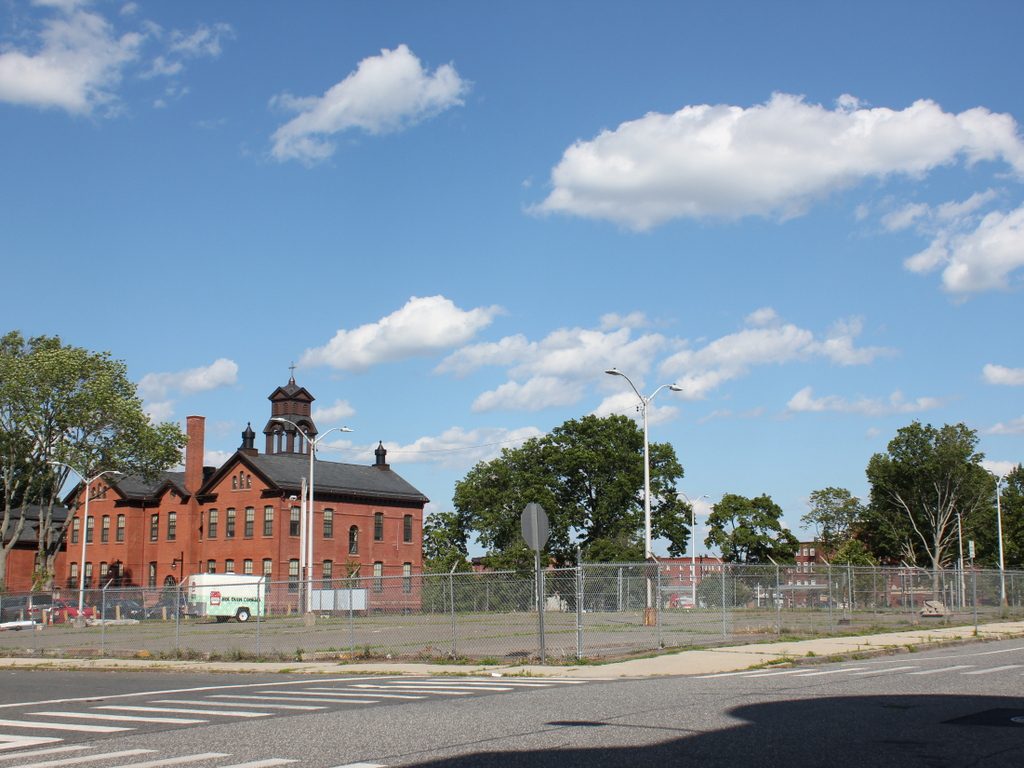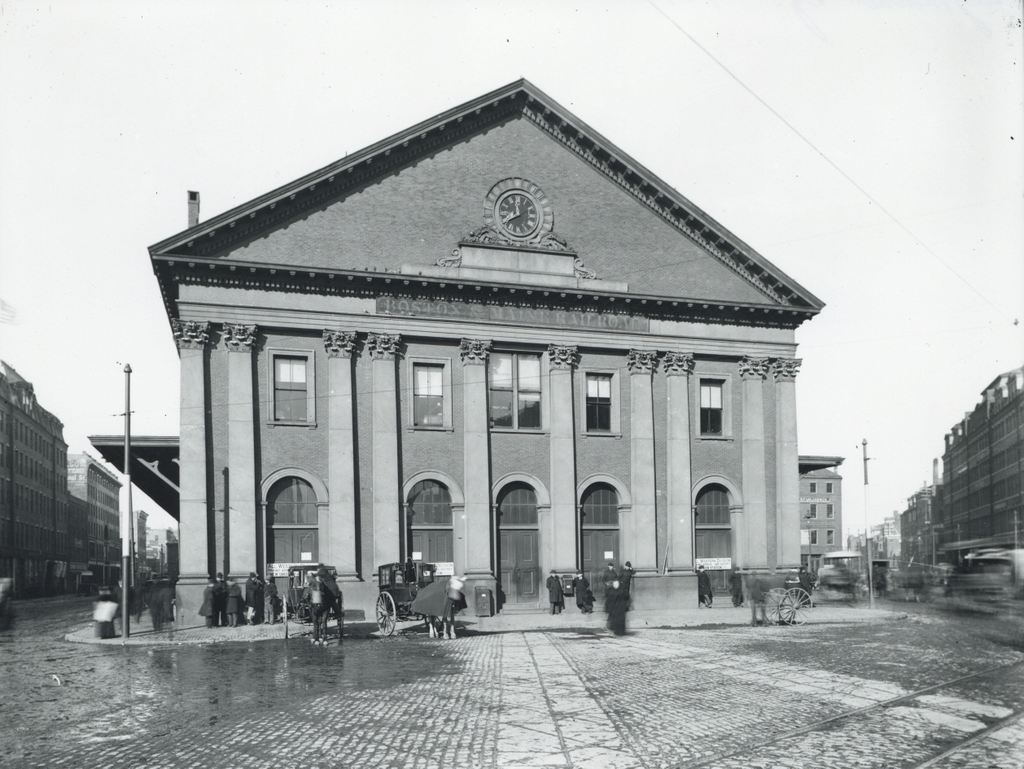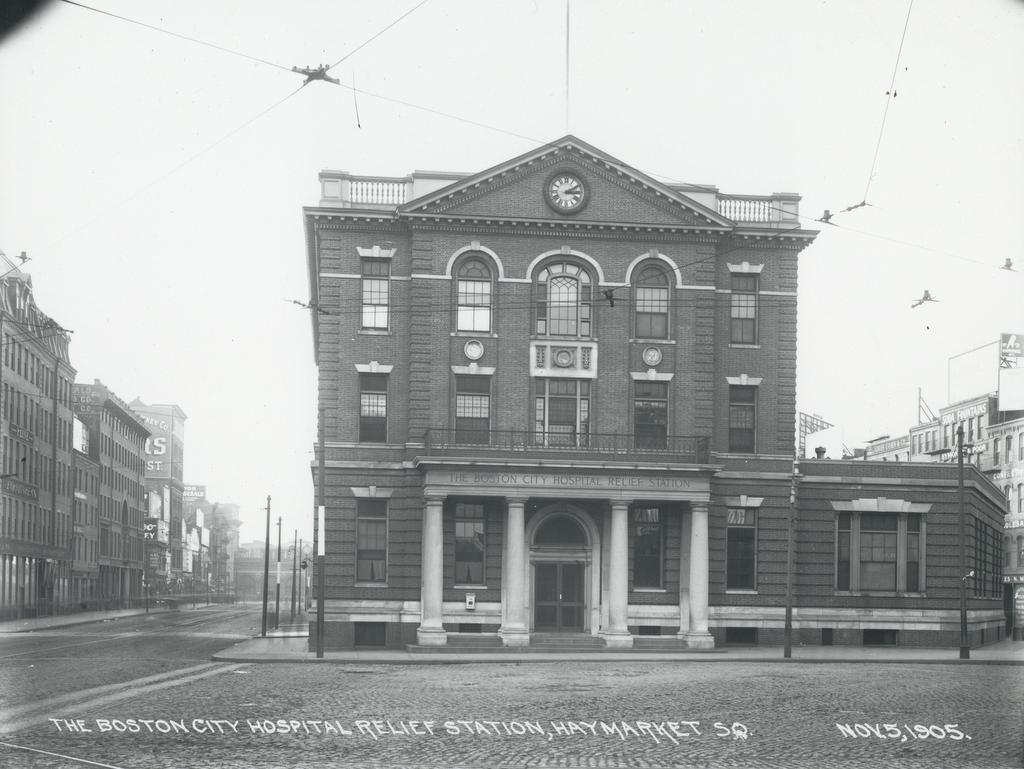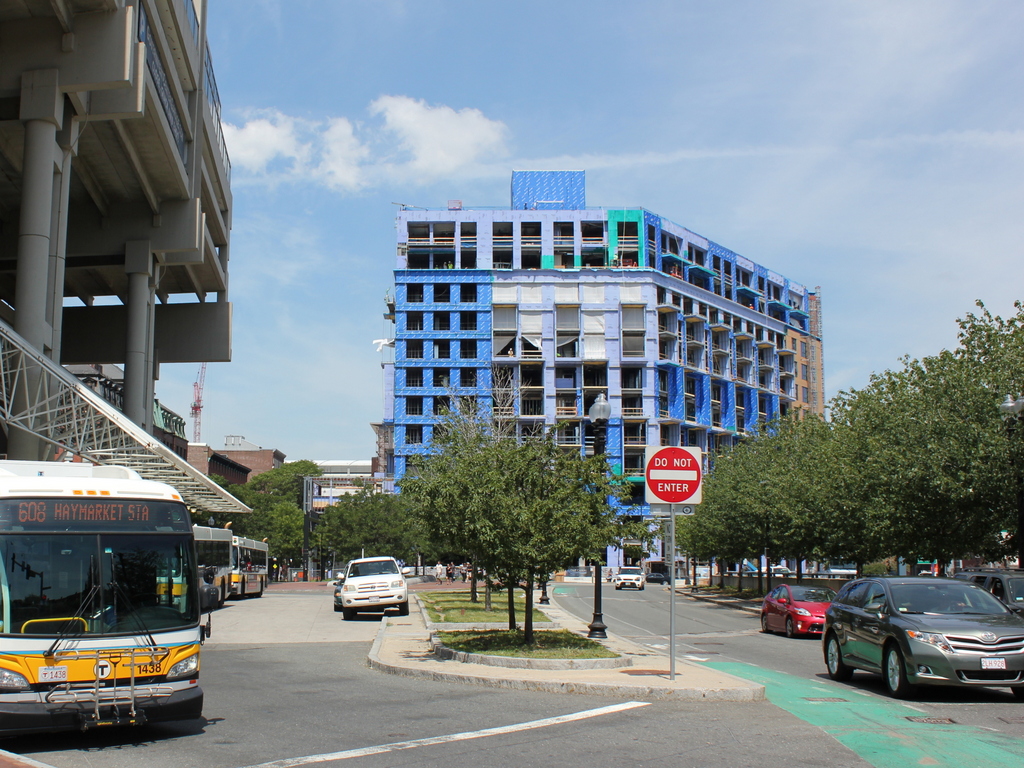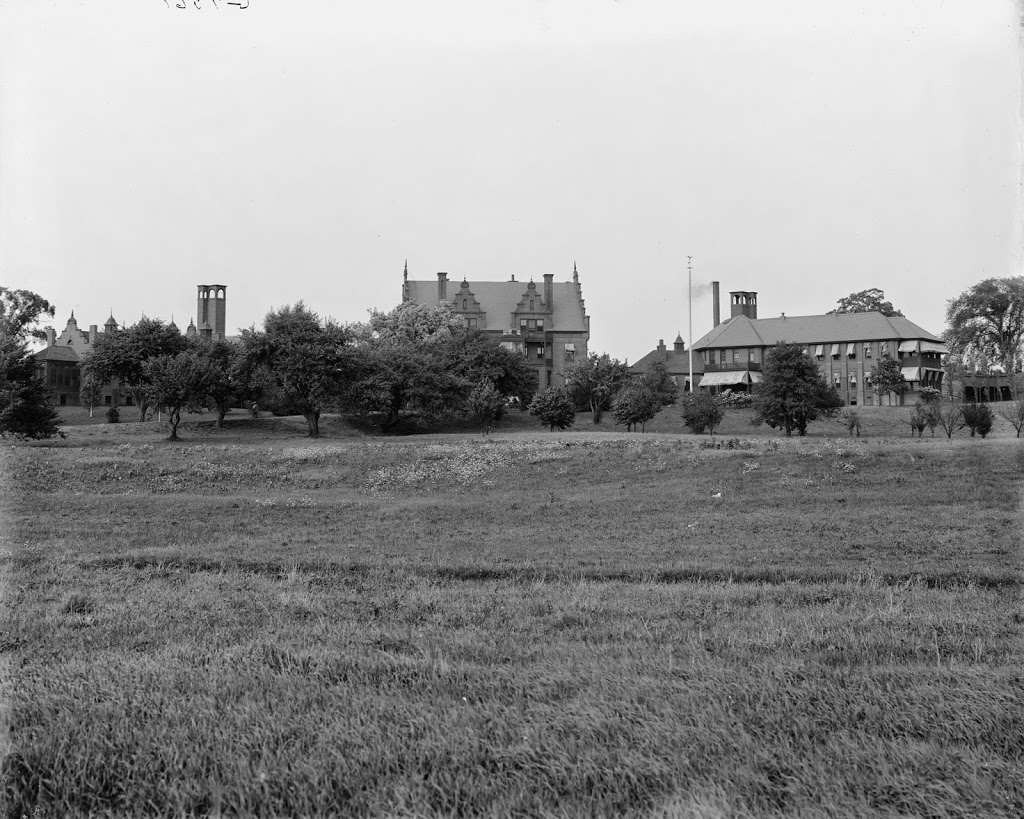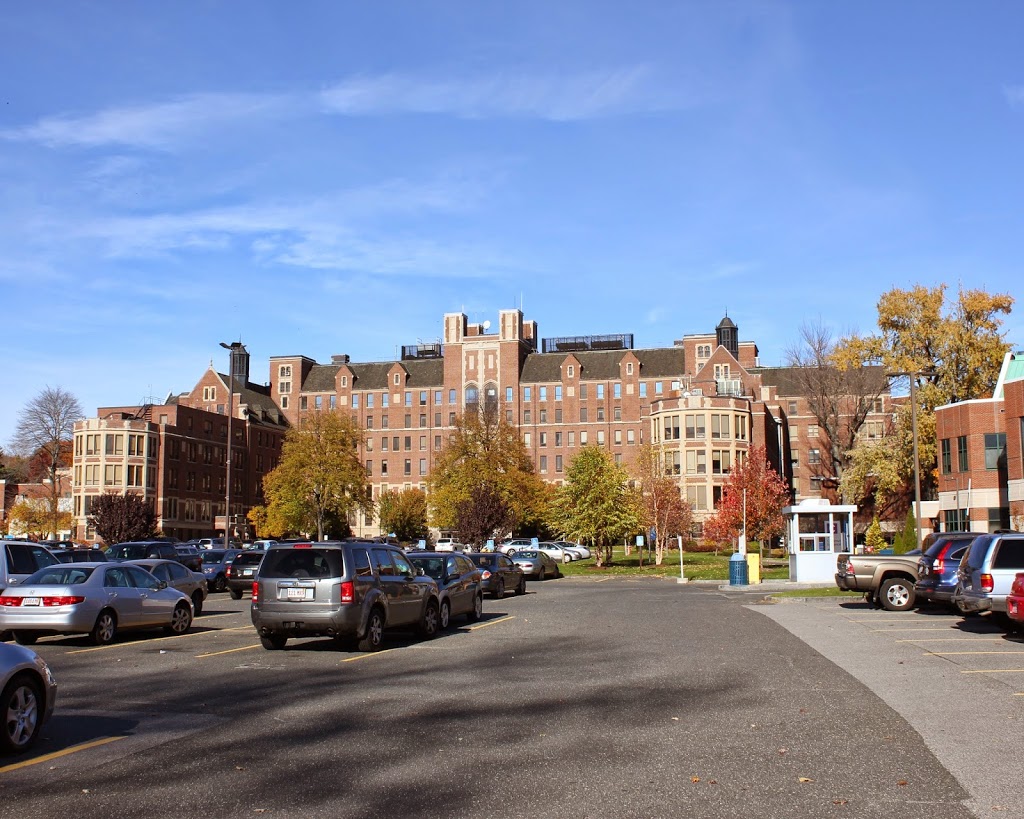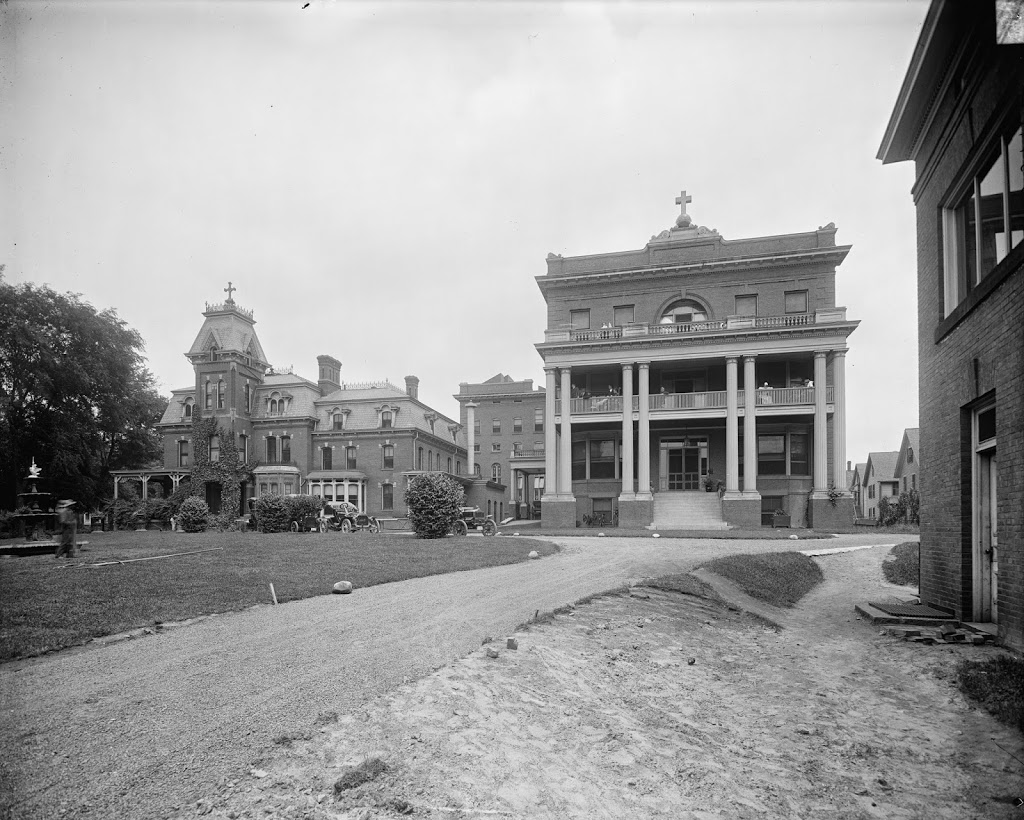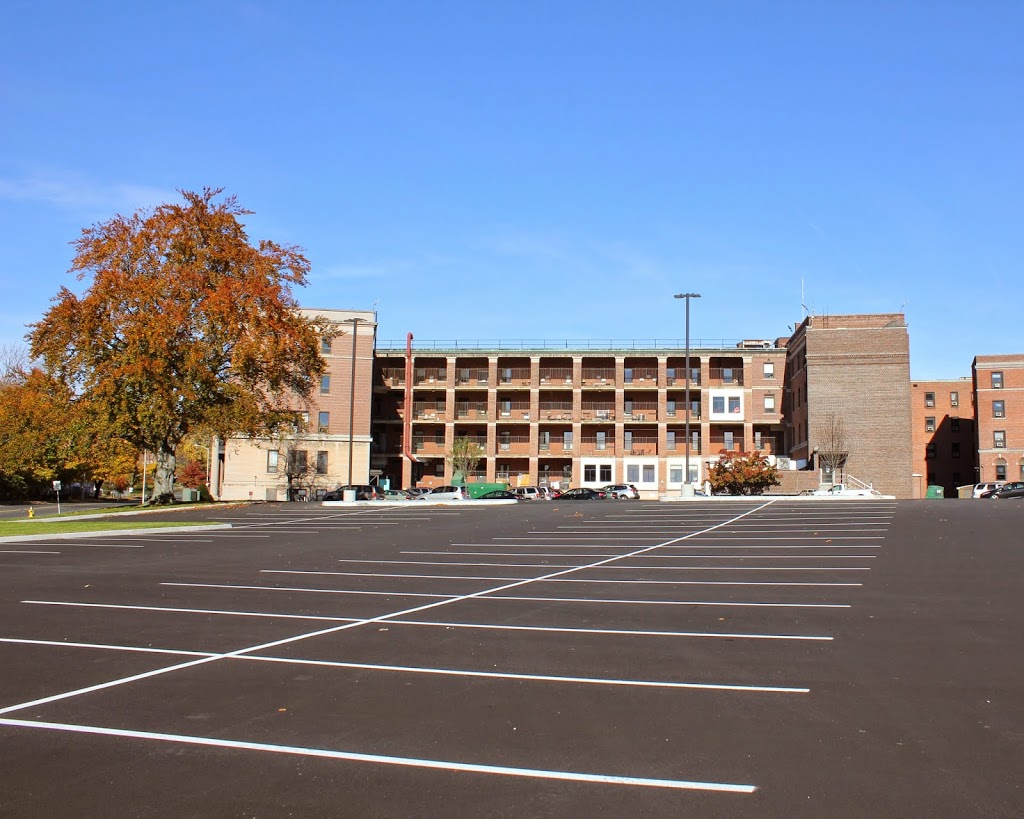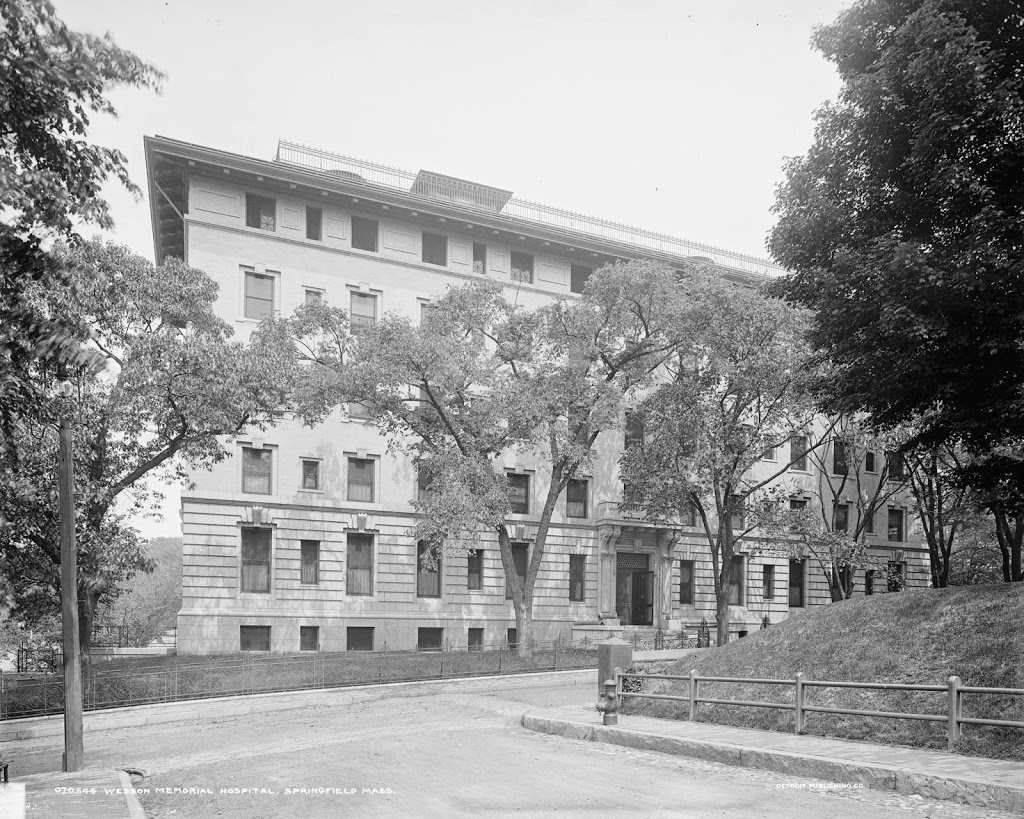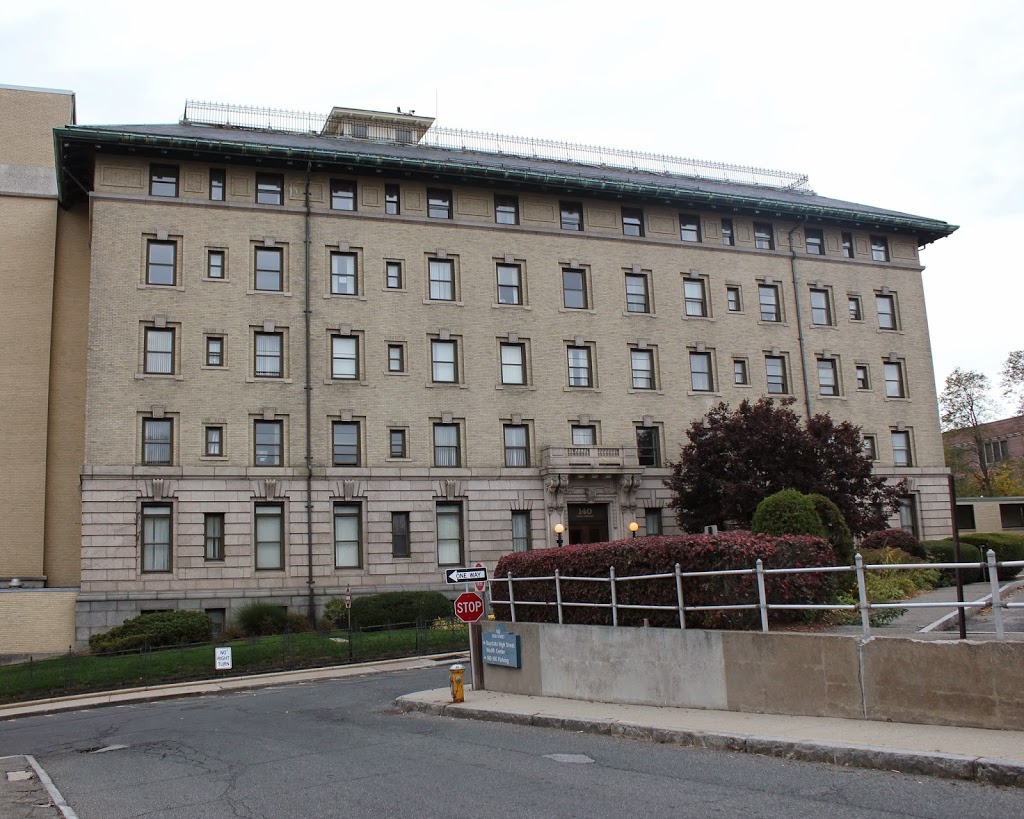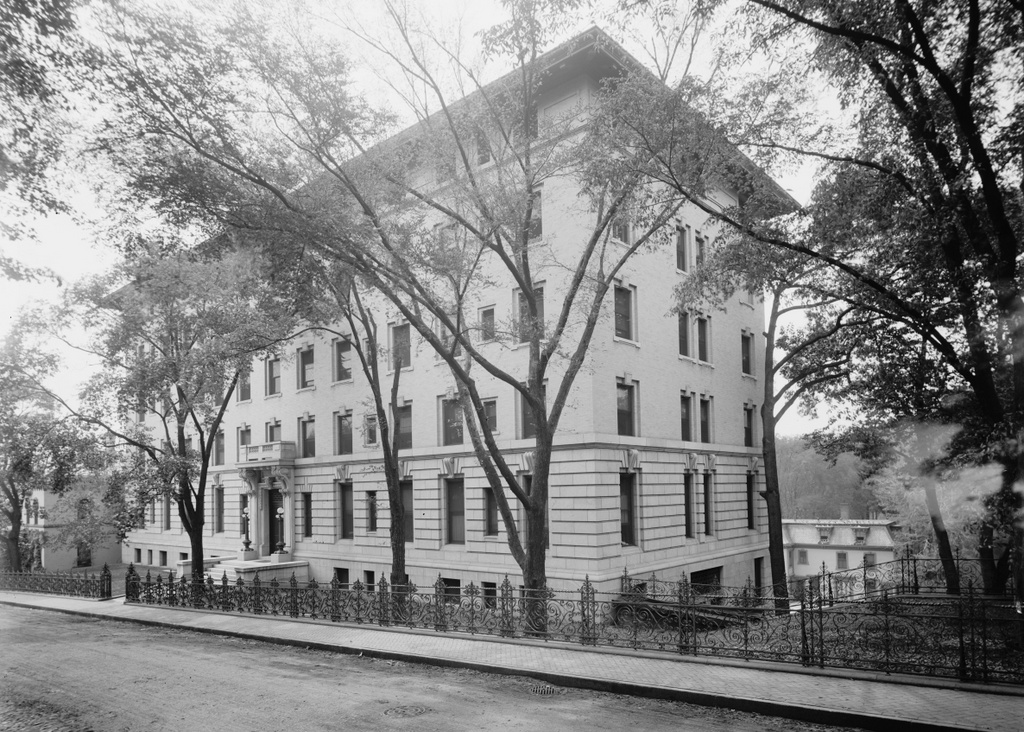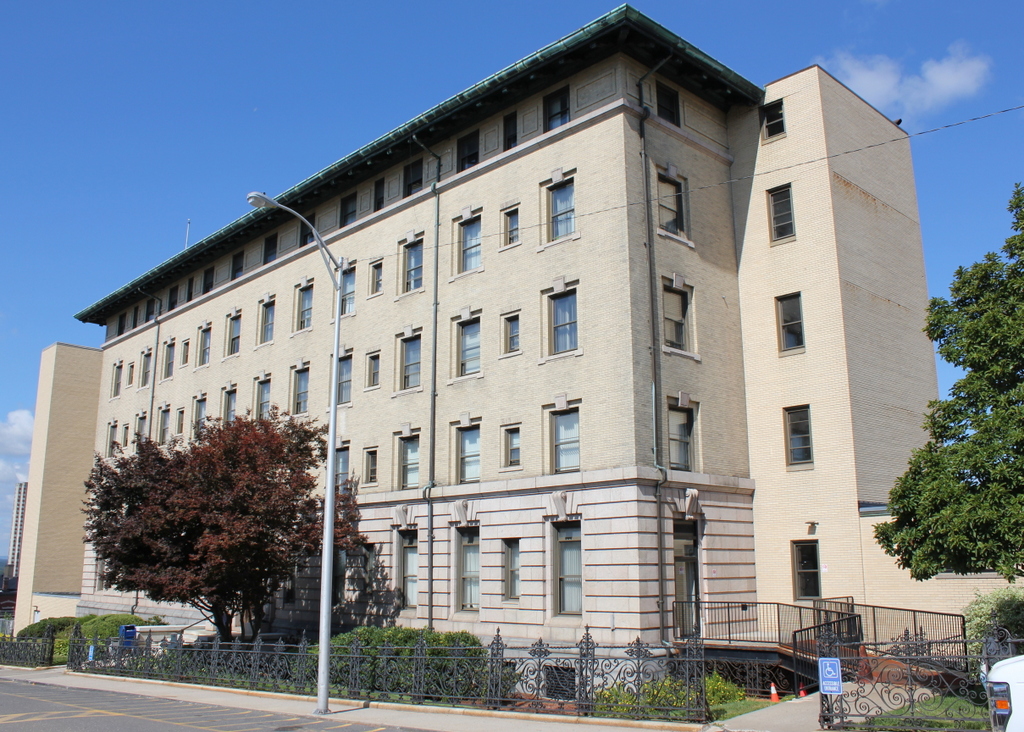The House of Providence Hospital, at the corner of Elm and Dwight Streets in Holyoke, around 1900-1910. Image courtesy of the Library of Congress, Detroit Publishing Company Collection.
The scene in 2017:
The origins of the present-day Sisters of Providence Health System date back to 1873, when four women from the Sisters of Providence of St. Vincent de Paul in Kingston, Ontario arrived in the Holyoke area, in order to serve the needs of the largely Catholic, immigrant workforce in Holyoke. Originally, they were located across the river in South Hadley, but in 1874 the Sisters of Providence moved to Holyoke, and built a hospital here at the corner of Dwight and Elm Streets. This became the first public hospital in Holyoke, and served the needs of rapidly-growing city over the next few decades.
The Sisters of Providence remained a mission of the Kingston congregation until 1892, when it became an independent congregation, and two years later a new, larger House of Providence Hospital building was completed here on the site. The first photo shows the building about a decade later, with the Father Harkins’ Home for Aged Women just beyond it on the left. At the time, this area had a number of Catholic institutions, including the Immaculate Conception School, the Convent of Notre Dame, the Convent of St. Vincent de Paul, the St. Jerome Institute, and St. Jerome’s Church, all of which where located within a block of here.
More than a century after the first photo was taken, Holyoke has undergone some significant changes, and today there are no recognizable landmarks from the first photo. In 1958, the hospital moved to its current location in Ingleside, in the southern part of the city, and it is now the Providence Behavioral Health Hospital. The old building was subsequently demolished, and today the site is a vacant lot, although the old Immaculate Conception School – later home of Holyoke Catholic High School – is still standing in the distance on the left.

